I've been very fortunate in how I make a living. I am paid by my day job to develop custom curriculum, and then teach others what I've designed. As time has gone on, I've been able to integrate game-making (both tabletop and video games) into the curriculum I develop, resulting in some interesting - and still effective - methods of teaching. I wanted to briefly showcase some of that work here, roughly in chronological order.
1. Street Sign Bingo
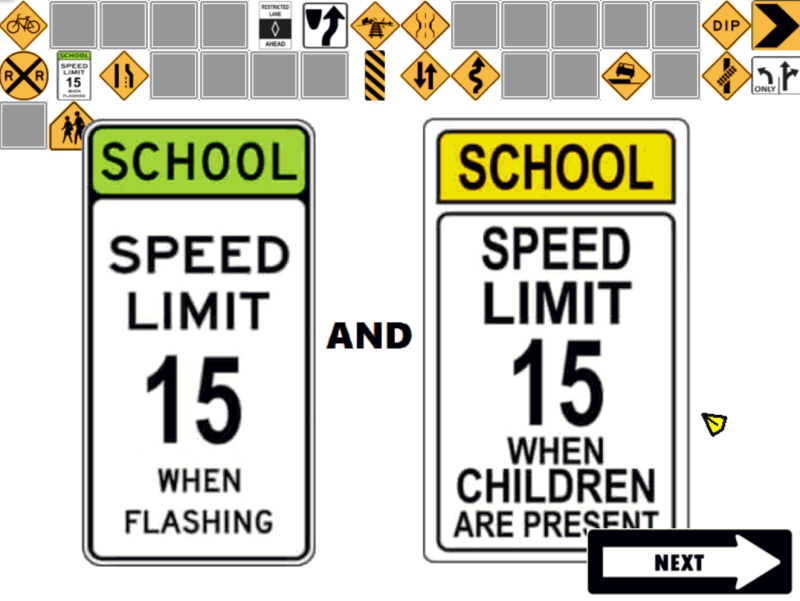
It all started here. As part of our CDL training module, I created a "bingo caller" focusing on the different street signs one would encounter on the road, some of which being of greater significance for those driving the larger, heavier commercial vehicles. We played this in the classroom. I facilitated the calling while clients each had their own unique bingo card with phrases that matched up with the images displayed on-screen.
2. Pre-Trip Inspection: Front of the Bus
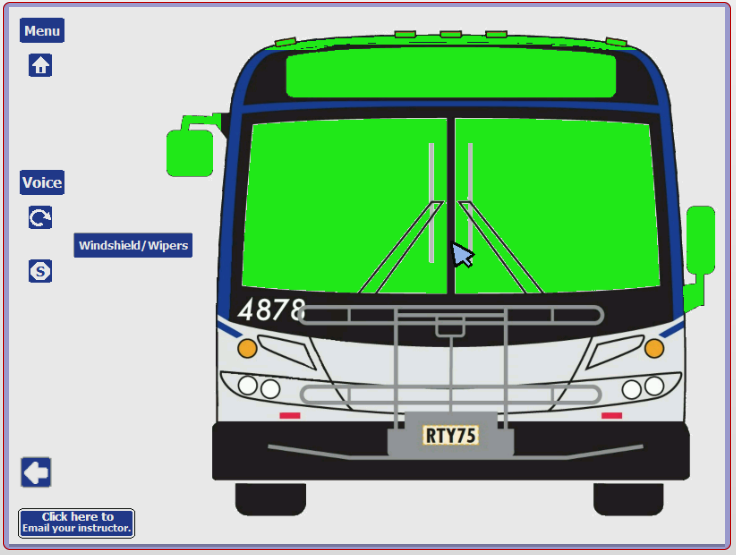
Then the pandemic happened. In order to keep our training going, I scrambled to find ways to adapt the curriculum to an online, "virtual classroom" format. This was my first attempt. It contains a rudimentary menu interface, full voice narration, and a graphical point-and-click display.
3. Virtual Self-Paced Lectures
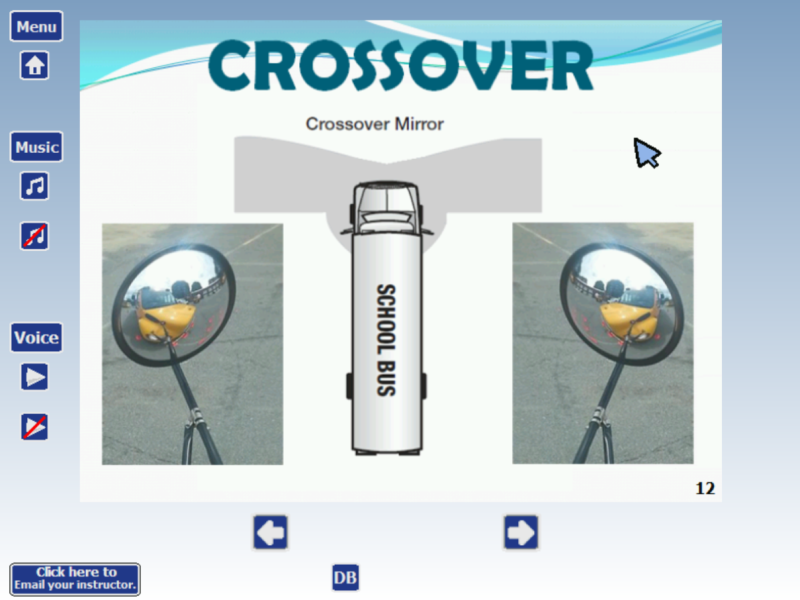
I also digitized many of the classroom lecture elements. Although there were hands-on activities interspersed with the lectures, I had to cut many of them out (until I could develop their online versions). The good news is that most of the lecture materials were relatively brief, and when the user can control the pace of the lecture itself, they can speed-through or repeat segments as desired.
4. Virtual Port Tour
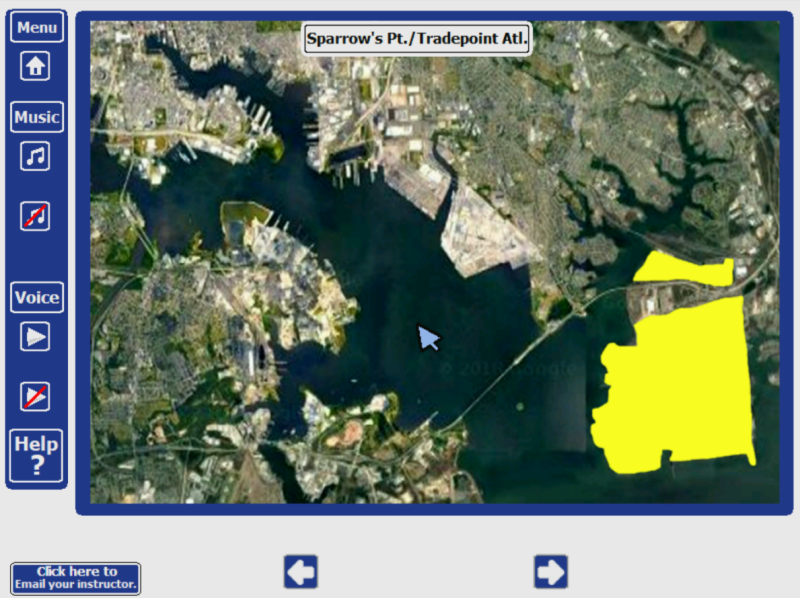
Our organization also does industry training for material handling and logistics. I pivoted from the CDL training into our warehouse and logistics training due to time constraints: CDL companies weren't hiring at the outset of the pandemic due to most public transit and schools being temporarily shut down. On the flip side, mail order and shipping of manufactured goods comparatively skyrocketed, and we wanted to make sure our clients could still find some kind of work to help make ends meet. This activity was an orientation to the various shipping terminals found in the town where we operate (Baltimore, Maryland, USA).
5. Cars Versus Forklifts
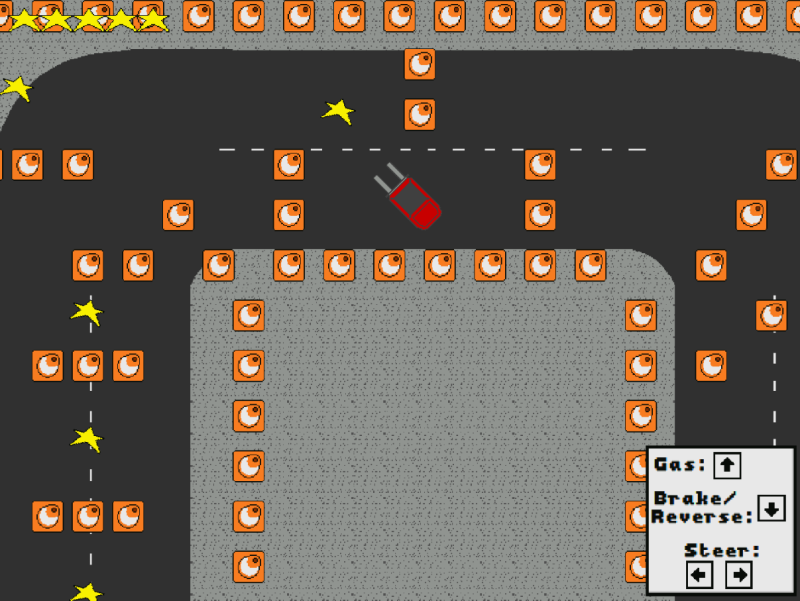
I started having a little fun with this one. It's also the most arcade-like game I've created to date. There are two stages, each one featuring a different vehicle the player must navigate around a course of traffic cones with a birds-eye view. The goal is to help the player internalize the different ways to pilot both a car and a counter-balanced forklift: each having different methods of control. We don't have a vehicle fleet available for our clients to train with, but this was my attempt at bridging that gap and preparing them as best I could.
6. How to Get It There

In addition to material handling, we provide an introduction to freight forwarding and route-planning. This is, in essence managing how goods are moved from one place to another. This activity allows the player to consider various modes of transportation, and which would be most-effective for their current cargo. Shipments can range from hundreds of tons of coal, to live animals, to industrial-size rolls of paper, and even an emergency human heart transplant.
7a. Alan and His Broken-Down Bus
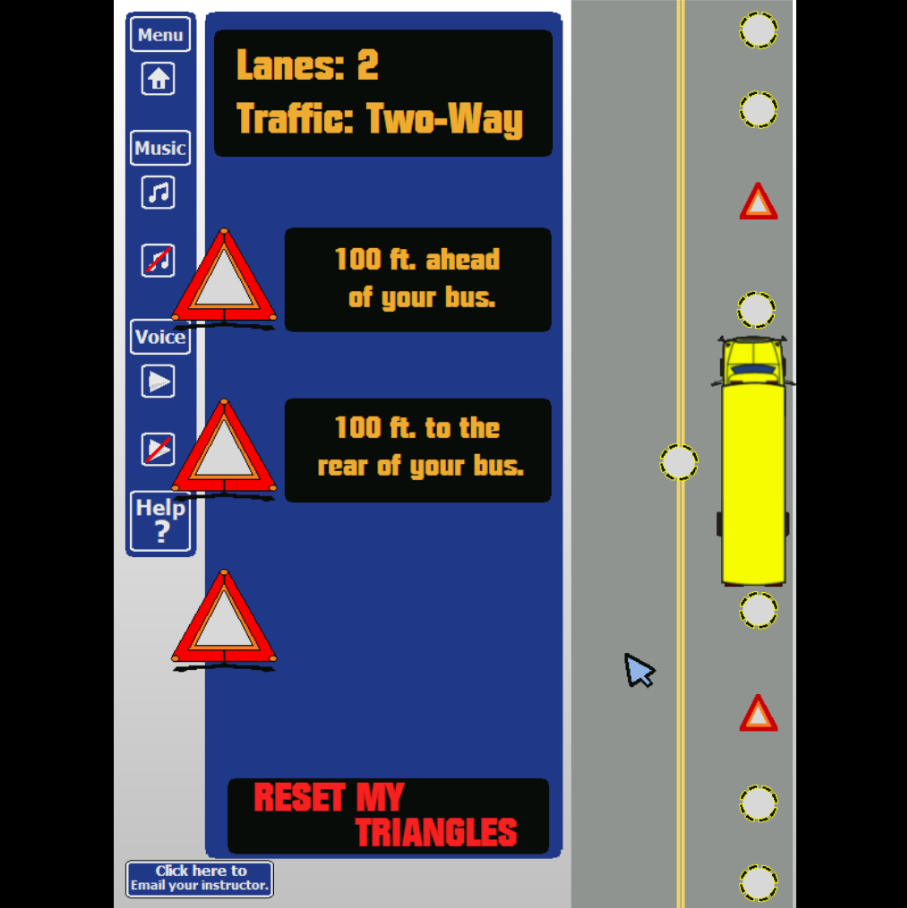
With most of the material handling & logistics curriculum sorted, I shifted again to the CDL training - which is experiencing limited re-opening and hiring. I developed this particular activity to allow a player to test their knowledge on where to place emergency signal devices (like flares and emergency triangle signs) on the road when their vehicle breaks down. There are three scenarios, each with different placements required. I provided full voice narration and even hints to assist the player - as this is rather dense, industry-specific information.
7b. Screenshot of Alan
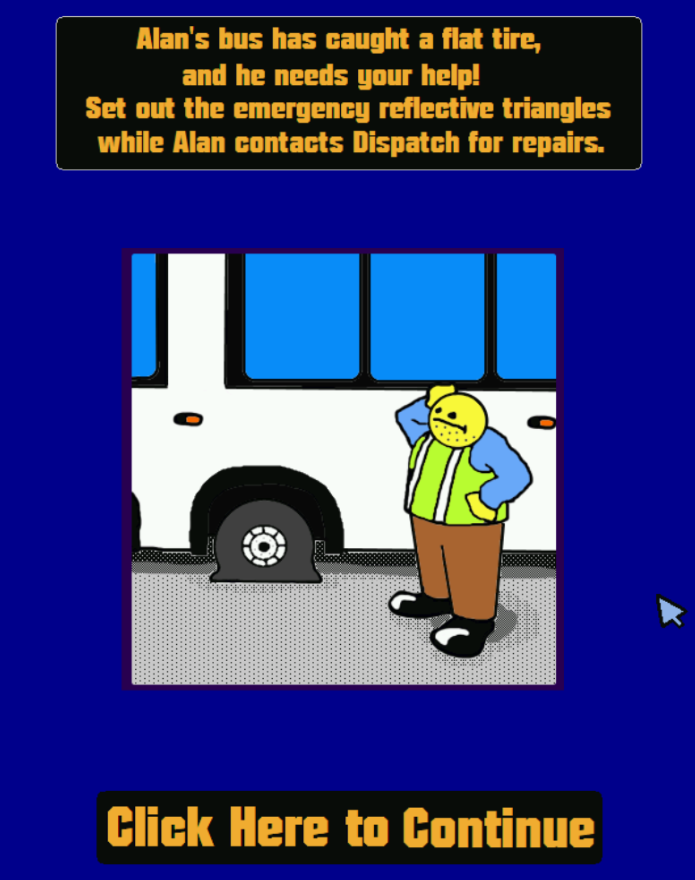
Here's a small piece of art I included in the emergency triangle game, to set the scene. I use this character a lot in the games I make, and I grin every time I'm able to sneak it in somewhere. For some foggy reason, I think the character design (at least the face) is actually inspired - if not outright stolen - from a comic strip in "Cracked" magazine, which I read a lot in my youth. The name "Alan" is my personal default name for any random guy, and has now been immortalized here.
8. Passcode Interface
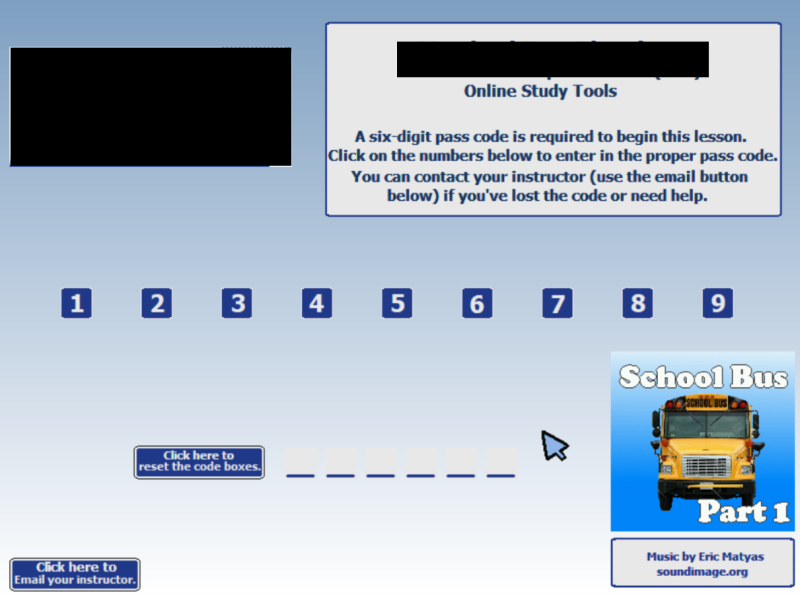
Finally, I wanted to include my "passcode" screen (I've omitted details of my day job with those black squares). This was one of my first developments when assembling even the concept of online training. I wanted to be able to "lock" the training away from the general public when required. The coding here (or rather, event structure, as I use Clickteam Fusion and not an actual coding language) allows me to use any six-digit code I want as a pass code to the software. Unless someone inputs the proper code, they won't have access. I'm surprised this actually works.
I'm surprised at my output and the end results of all of this actually, and I'm proud of what I've done so far. I stress that I am not a trained programmer, I am not a trained artist, and I am not even a trained educator. At the same time, I am technically considered a professional in all these areas, because I am paid to do them.
It was only opportunity that granted me license to do this. Looking at it one way: I had to learn it "on my feet," as curiosity and necessity provided. I also had to learn to use and implement the Moodle "virtual classroom" on the fly, and found ways to integrate lectures, quizzes, videos (some I made, some copped from YouTube), and these online activities in a package that covers a broad range of industry knowledge, while keeping things engaging by providing a variety of different methods.
My main point in mentioning all this, I suppose, is to invite you to do the same thing with your own skills and talents. I'm confident in my belief that, if someone like me can be fueled and fortified primarily by "gusto" to take care of business, then those of you who are not just curious, not just driven, but actually trained to use software tools can certainly thrive in times like these.
Take it from one no-talent white guy in his early 40's who - by stumbling from one minor success to the next - has helped hundreds of people and their families: go do the thing. You'll be surprised by what you can accomplish.
PS: I'd be completely remiss if I didn't mention Eric Matyas at SoundImage. He provides 2,000+ high quality music files for use in your projects, with no cost required. His music is sprinkled liberally through nearly every single project I've done since December 2019. I strongly recommend you check him out, and support his work with financial contributions.





